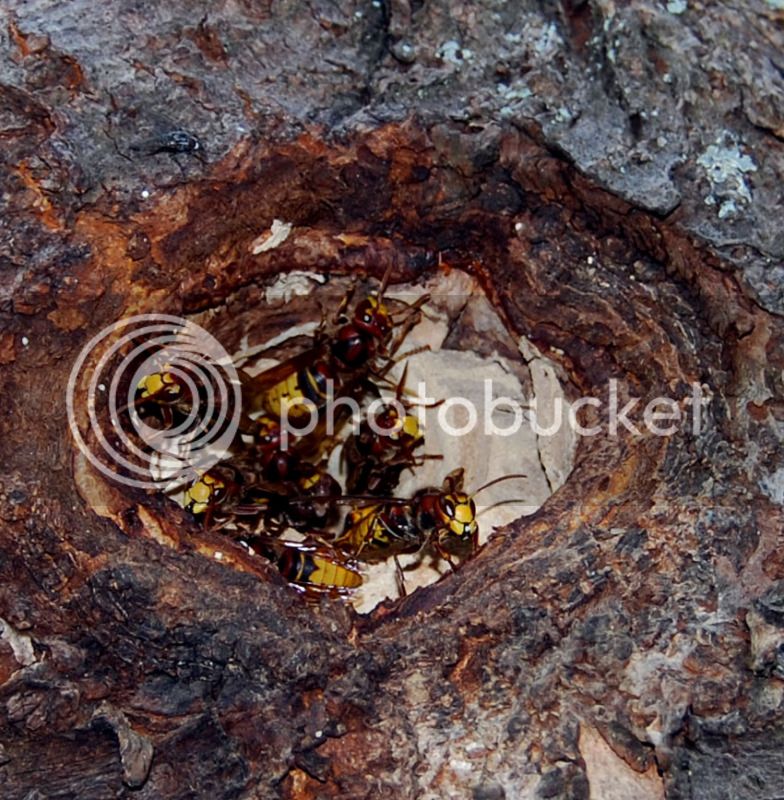I think your maths is good, assuming you mean one every 55 yards squared (ie. one every 3000 square yards or so). But another way of putting it would be "one to two wasp nests per acre", which doesn't sound nearly as scary.
Quite right

For beeks though, this does translate to between 2,000,000 to 5,000,000 wasps per square mile based on average nest sizes rising to 20,000,000 wasps per square mile for larger nests. When you take into account the two mile flying radius that wasps are capable of, that jumps to between 25,000,000 to 250,000,000 wasps within range of a hive.
Clearly, hives aren't attacked by such concentrations of wasps simply because there are other competing food sources which dilute the attacks. However, when food is scarce, (normally when fruit yields are low), then it's easy to understand how hives can quickly become vulnerable.
I'm still getting reports of wasp nests that are still growing and not yet matured (i.e. foragers not yet sweet feeding). What I'm not clear about is the density of colonies that are out there. It's not clear whether wasp colony numbers are depressed or merely delayed in their development. There are a number of factors which have clouded monitoring. The weather has certainly delayed development (by as much as 6 to 8 weeks we believe). Peoples' outdoor behaviour this year has been uncharacteristic with many people staying in doors because of the weather, jubilee and the olympics. Being indoors, they've not been seeing or reporting wasps. It's interesting that the pest controllers that we deal with have had a 90 to 95% reduction in the number of nests treated compared to the same time last year BUT in the last few days they have treated more nests than they have for the whole of the rest of the year combined.
I honestly don't know which way things will turn out but I do suggest that beeks stay vigilant because there are sufficient risk indicators to suggest that there may be a late rebound which might be quite harsh because of the lack of naturally available food, especially once the ivy stops flowering.





















































